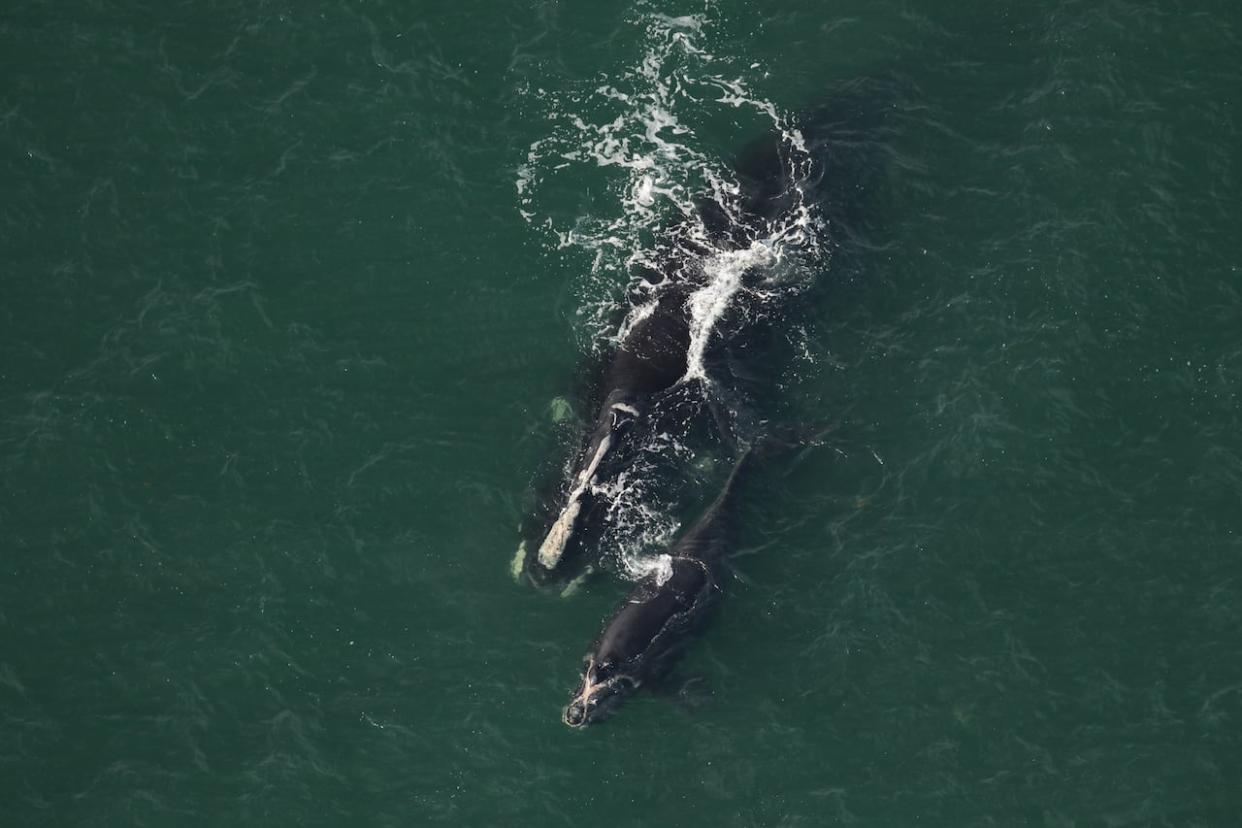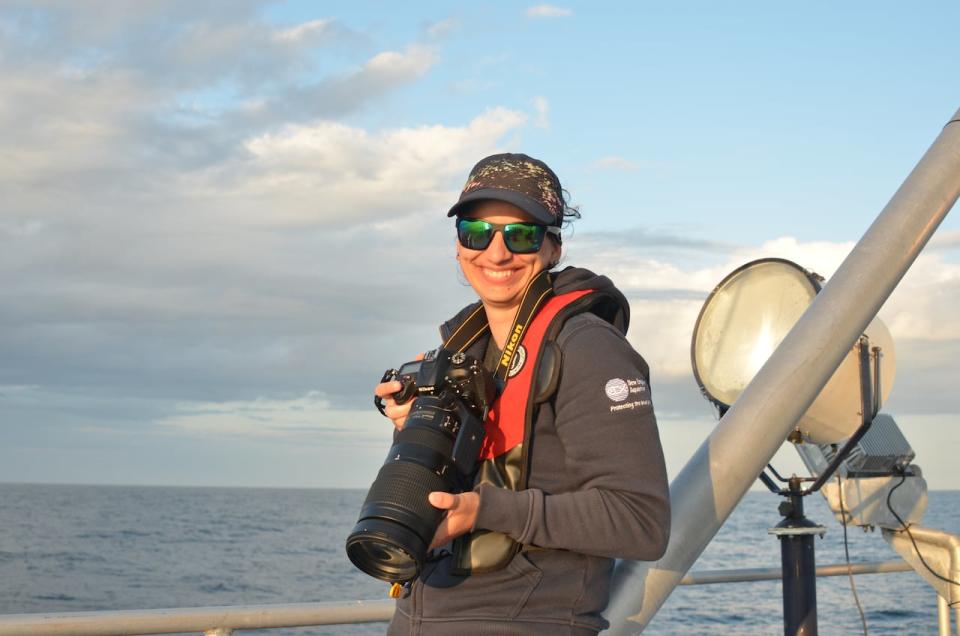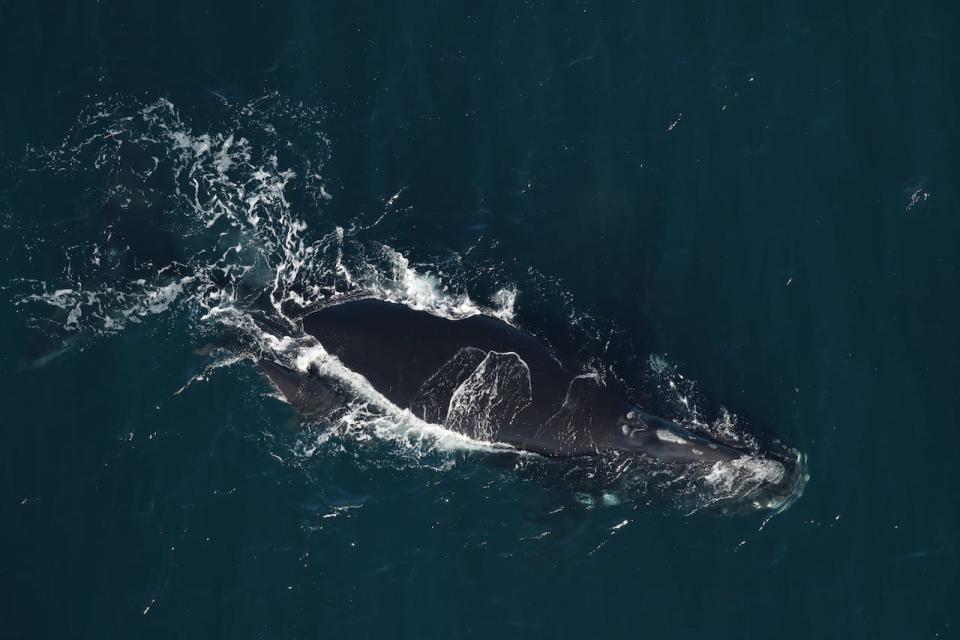9 North Atlantic right whale calves born so far this breeding season

One month into the breeding season for North Atlantic right whales, nine calves have been born.
Amy Warren, an assistant researcher at the New England Aquarium's Anderson Cabot Center for Ocean Life, said she's crossing her fingers for more births, but that the count at this stage is pretty much on par with previous seasons.
"It's been hard to judge because the trends have shifted a little bit earlier some years, a little bit later some years," Warren said. "Last year at this time, I believe we had 10 calves. So we're really not far off from that."
Warren said she would love to see numbers in the 20s — the average used to be 22 calves a year — but she said that number hasn't been seen in 10 years.

The average used to be 22 new calves a year, but that number hasn't been seen for a decade, says Amy Warren, an assistant researcher at the New England Aquarium's Anderson Cabot Center for Ocean Life. (Submitted by Amy Warren)
While there are enough females at the breeding grounds, located off northern Florida and the coast of Georgia, it would take almost all of those females giving birth to reach more than 20 births, said Warren. But that isn't realistic.
She said the females in the population need to be healthier, and many of them are not because of a variety of problems, some of which have been caused by humans.
Right whale injuries, deaths
In October, scientists in the North Atlantic Right Whale Consortium released the year's estimate of 356 right whales.
The consortium also revealed two detected deaths of right whales in 2023, but said "roughly two-thirds of North Atlantic right whale deaths go undetected."
The New England Aquarium analysis detected 32 human-caused injuries to right whales in 2023, according to the October figures. They involved 31 whales, one of whom was injured twice.
The majority of those injuries were caused by entanglements in fishing gear, according to the analysis.
Warren said some whales that appear to be healthy still don't give birth regularly, if at all.
New calf sightings
The most recent new calf sighting, which brought the number to nine, was from a mother whale named Swerve, who last gave birth eight years ago to her fifth calf.
Warren said there was also a first-time mother this year. She doesn't have a name but her identification number is 3780.

First-time mother whale #3780 and her newborn calf sighted Dec. 31, 2023. (Florida Fish and Wildlife Conservation Commission, NOAA permit 26919)
"She's kind of a mystery whale," Warren said. "We don't really know much about her because when she was first seen, she was already an adult in 2007. And so she's been seen around for 17 years, and this is the first time she's given birth.
"But unfortunately, we are starting to see whales wait a bit longer to have their first calf. Potentially, they're not developing as quickly or … they're not able to prepare their bodies as quickly to give birth as they used to."
She said right whales used to give birth as early as age eight or nine, but now the norm is late into their teens or early 20s.
Safety concerns
Warren said it's important to keep the newly-born whales safe.
Some calves at the breeding grounds are still learning how to swim and can't hold their breath for very long. Because of this, a mother and calf spend more time at the surface, making them more vulnerable to ship strikes.
She said research teams work to communicate this kind of information with the public so that boaters will know to keep a watchful eye.
"Unlike us here in the northeast, in the wintertime, it's still nice enough to go out on boats and fish and things like that," Warren said. "And so there's a lot more people on the water down there than there are comparatively to the north at this time of year.
"So it's definitely a concern to make sure they stay safe while they're down there."
Sightings in Atlantic Canada now trigger strict fishery closures. The shutdowns — and lower ship speed limits — were imposed after a total of 21 right whales died in the Gulf of St. Lawrence in 2017 and 2019.


